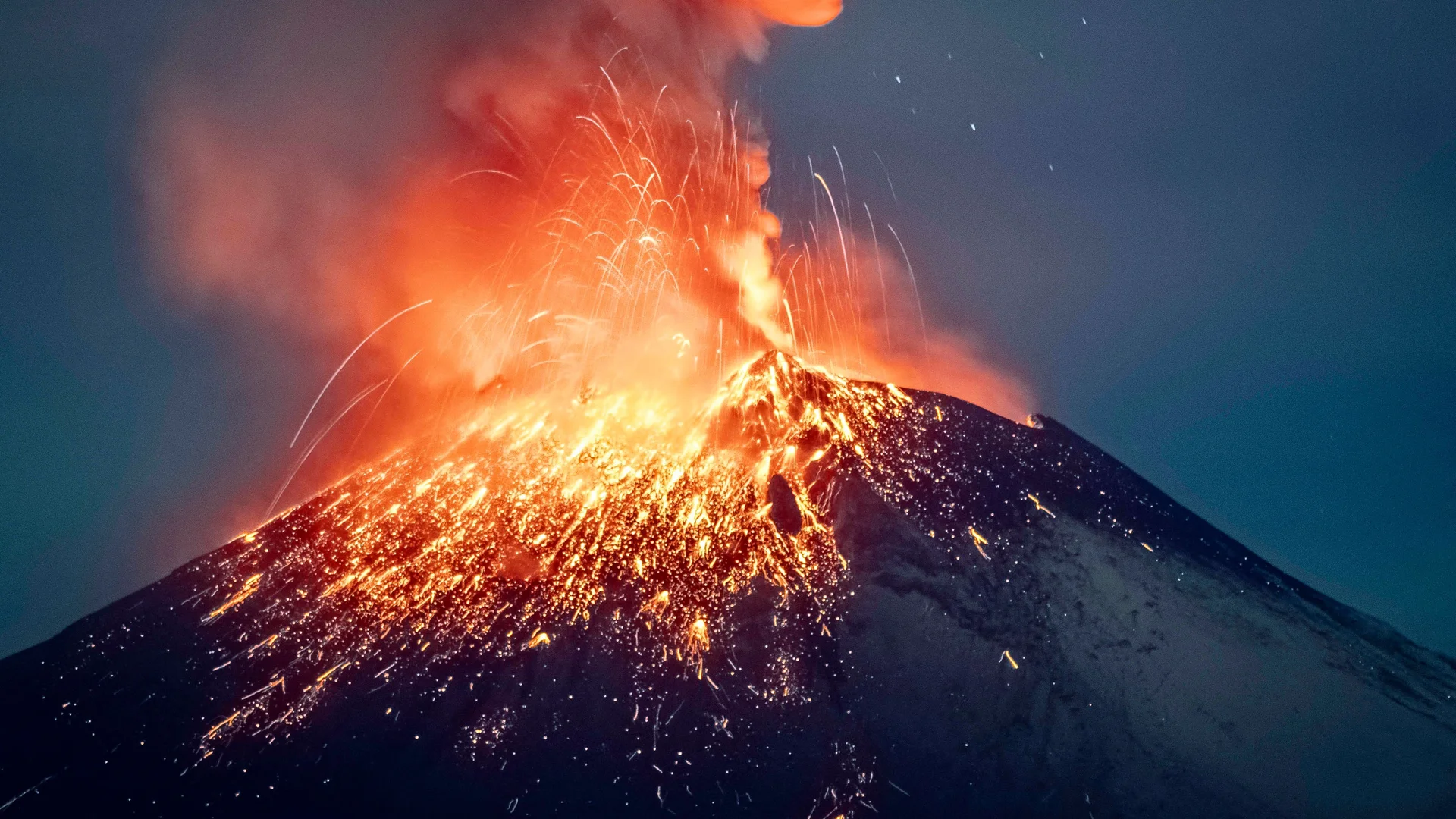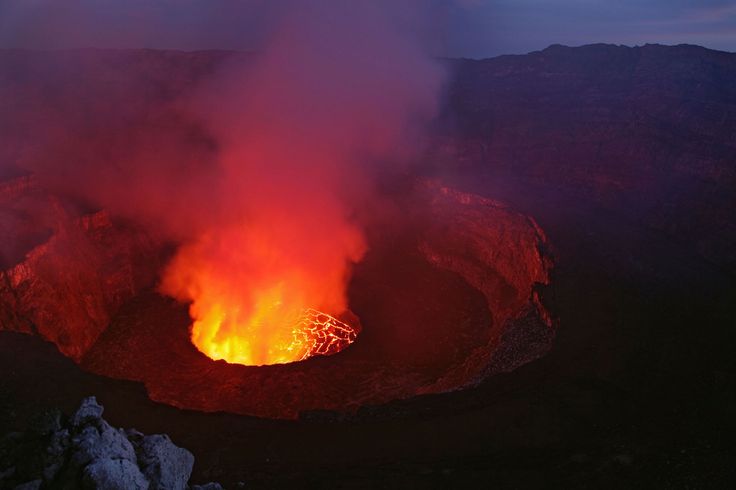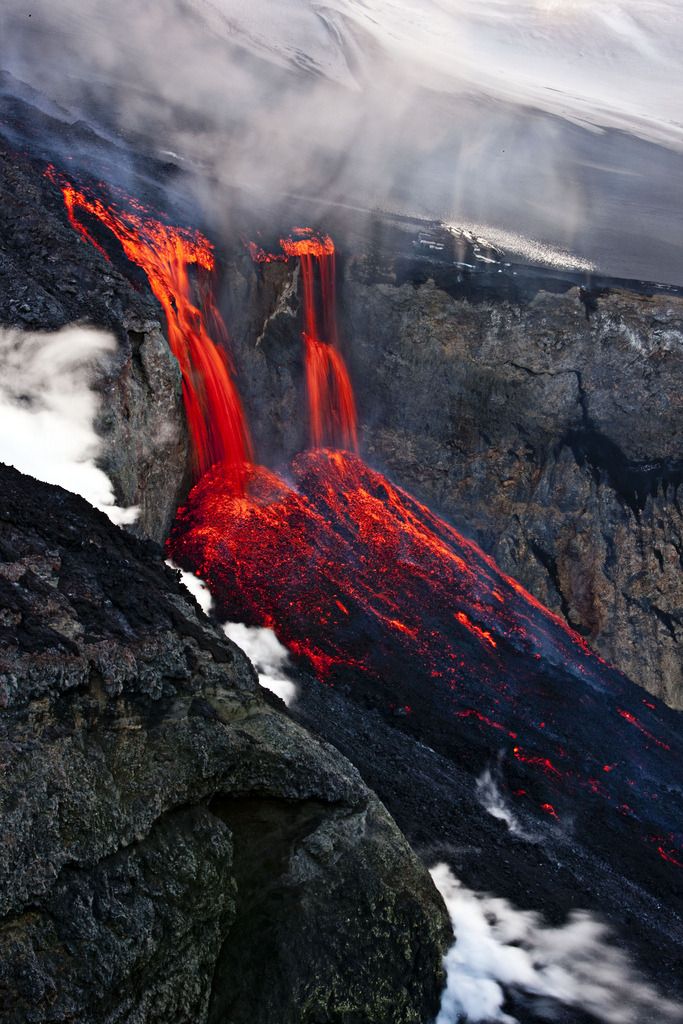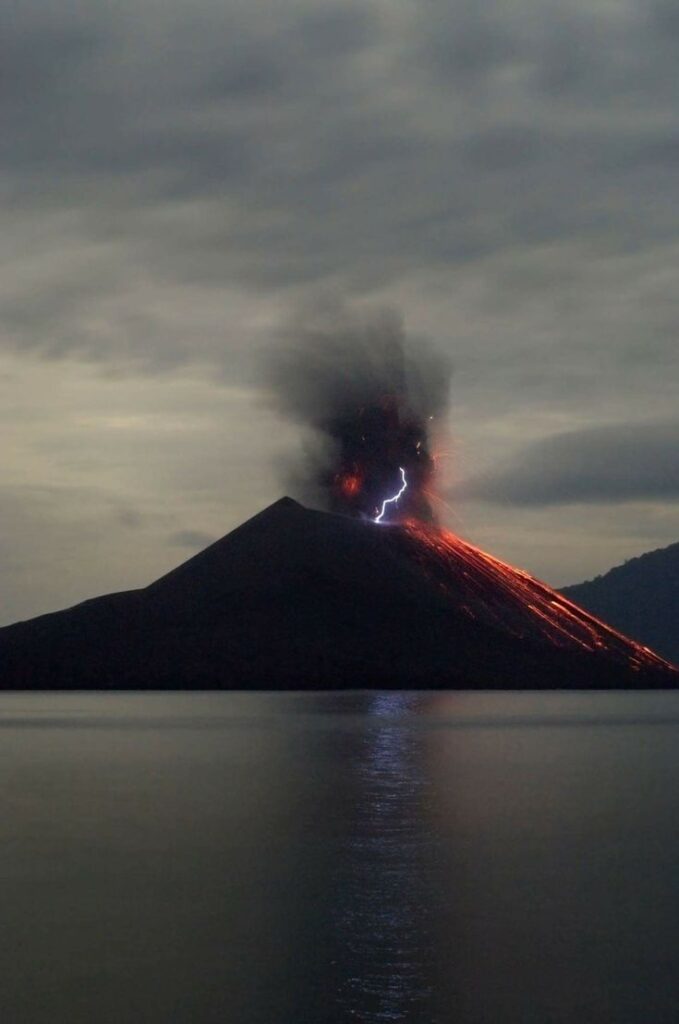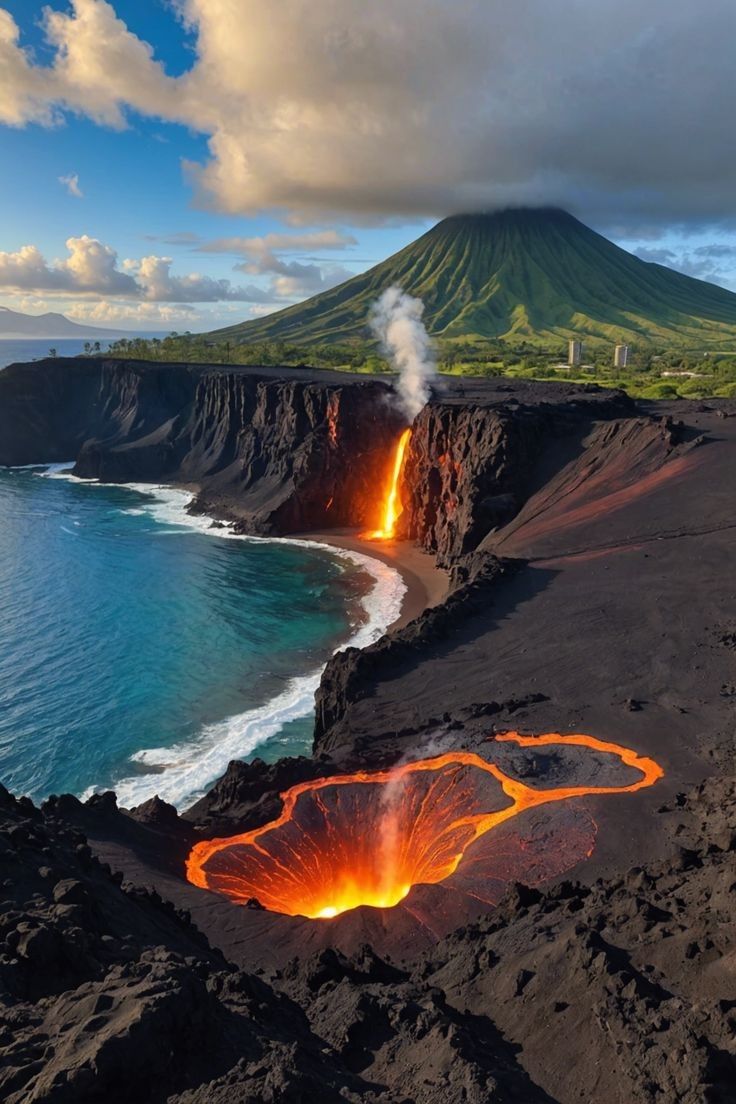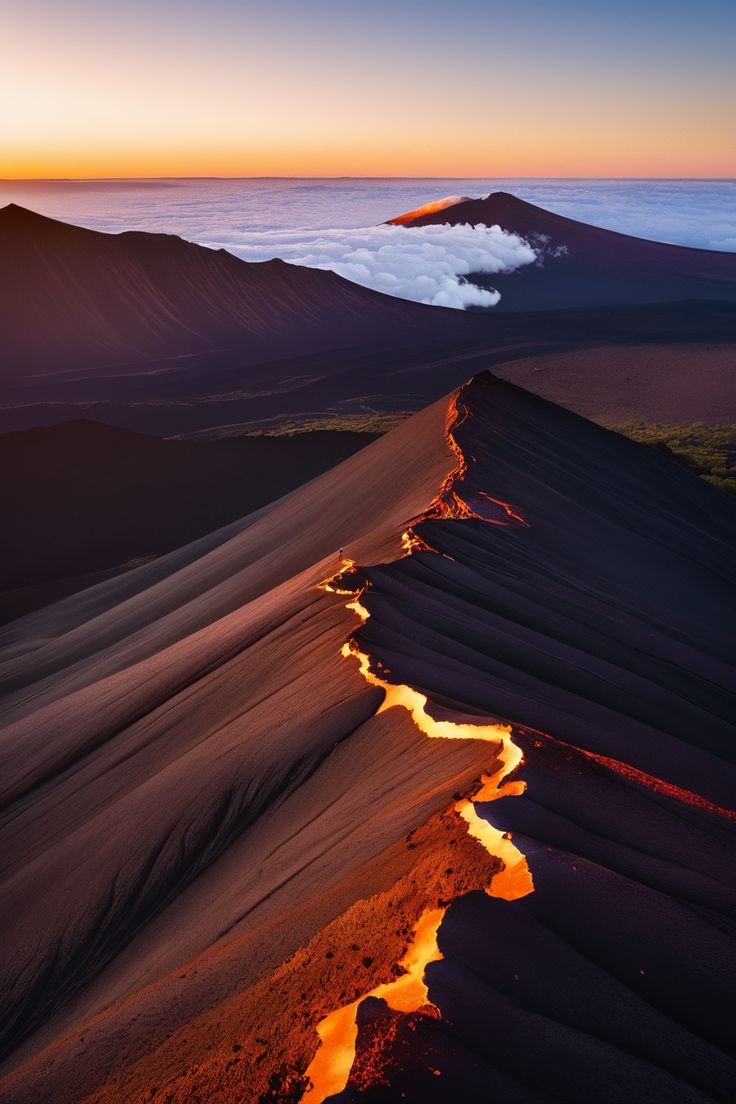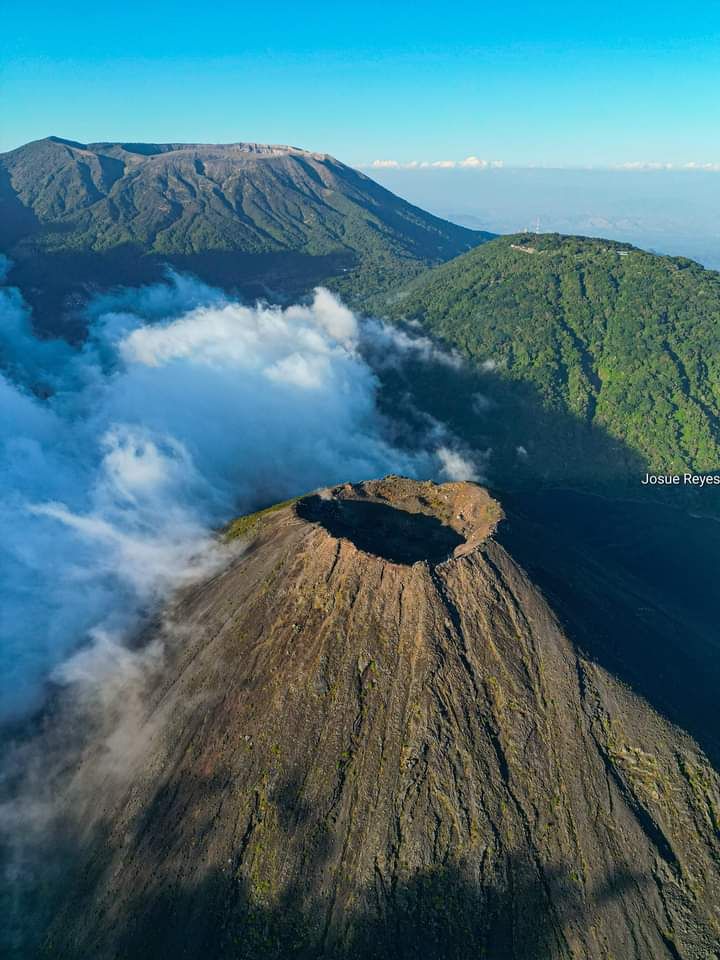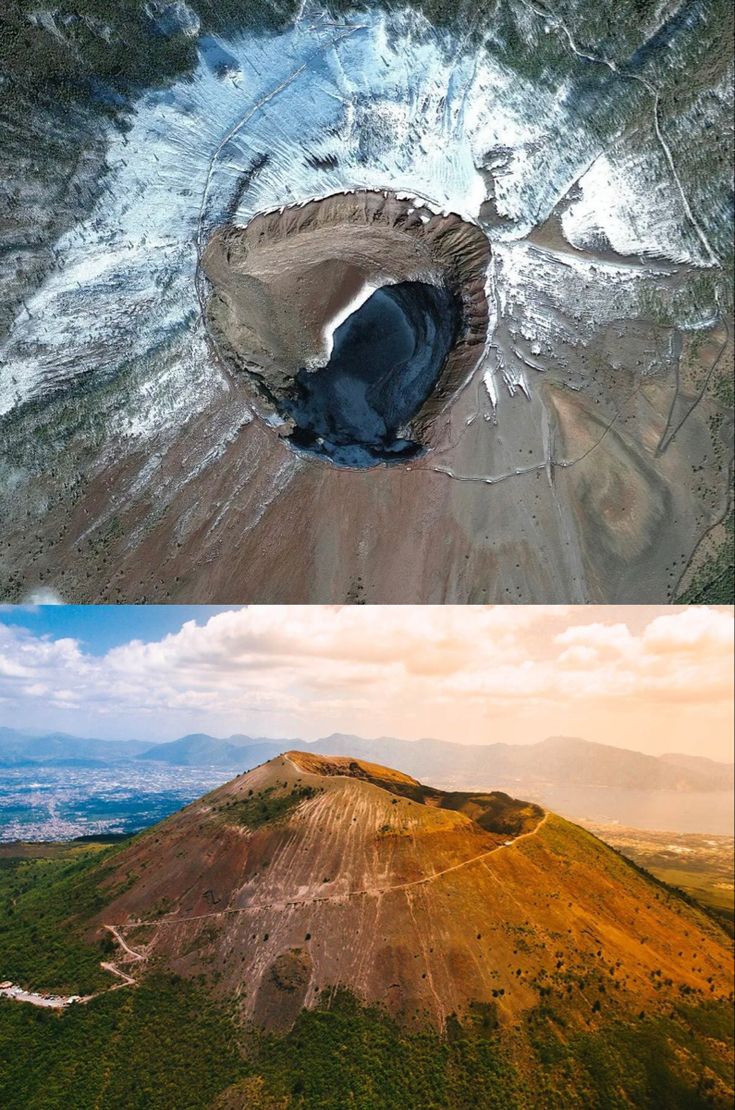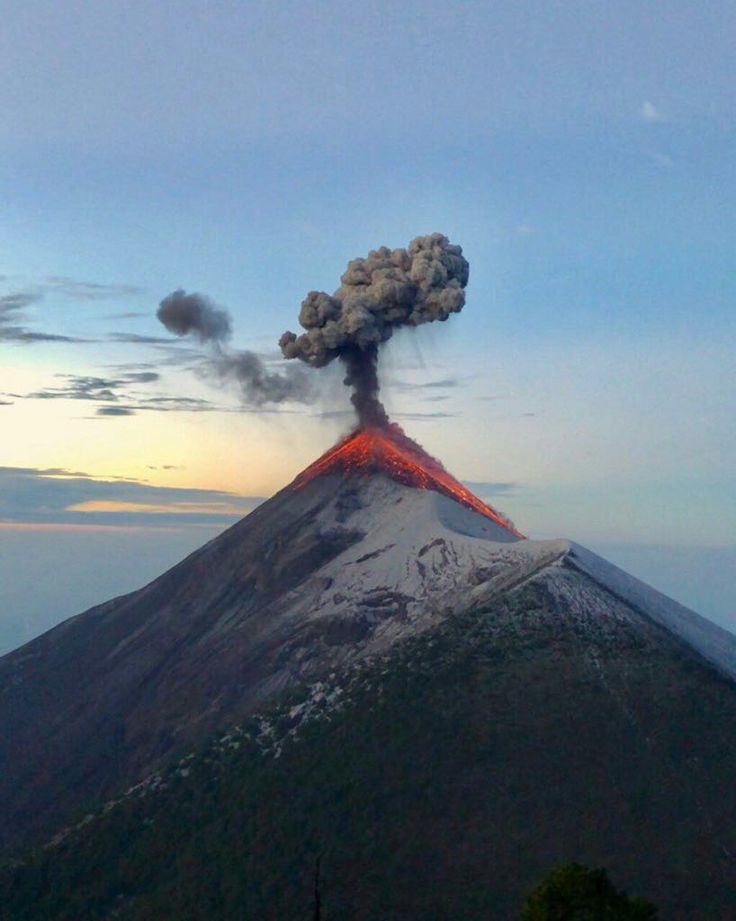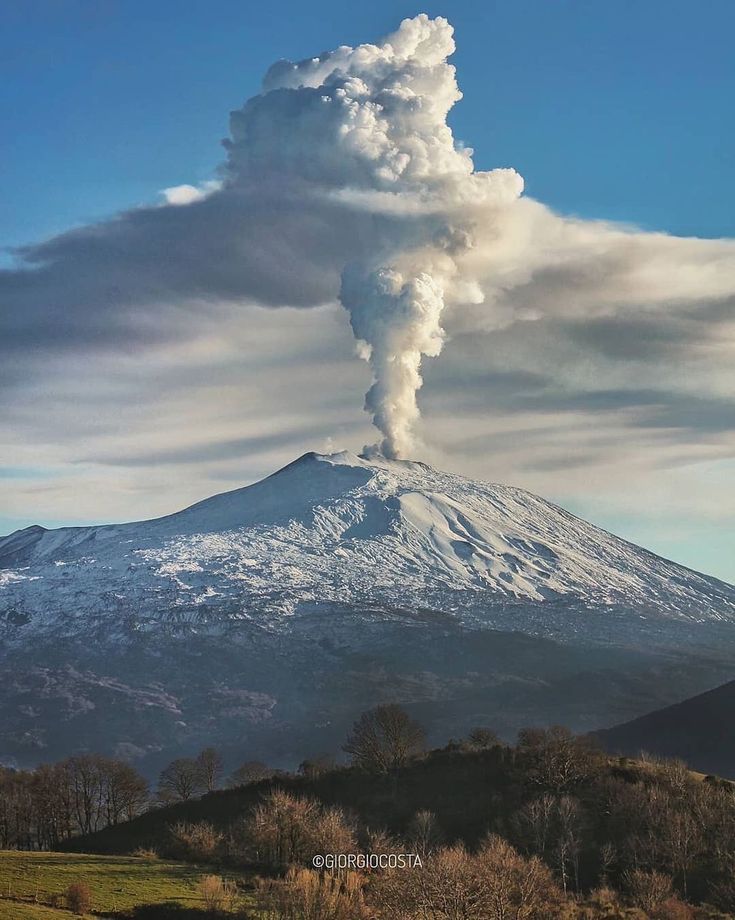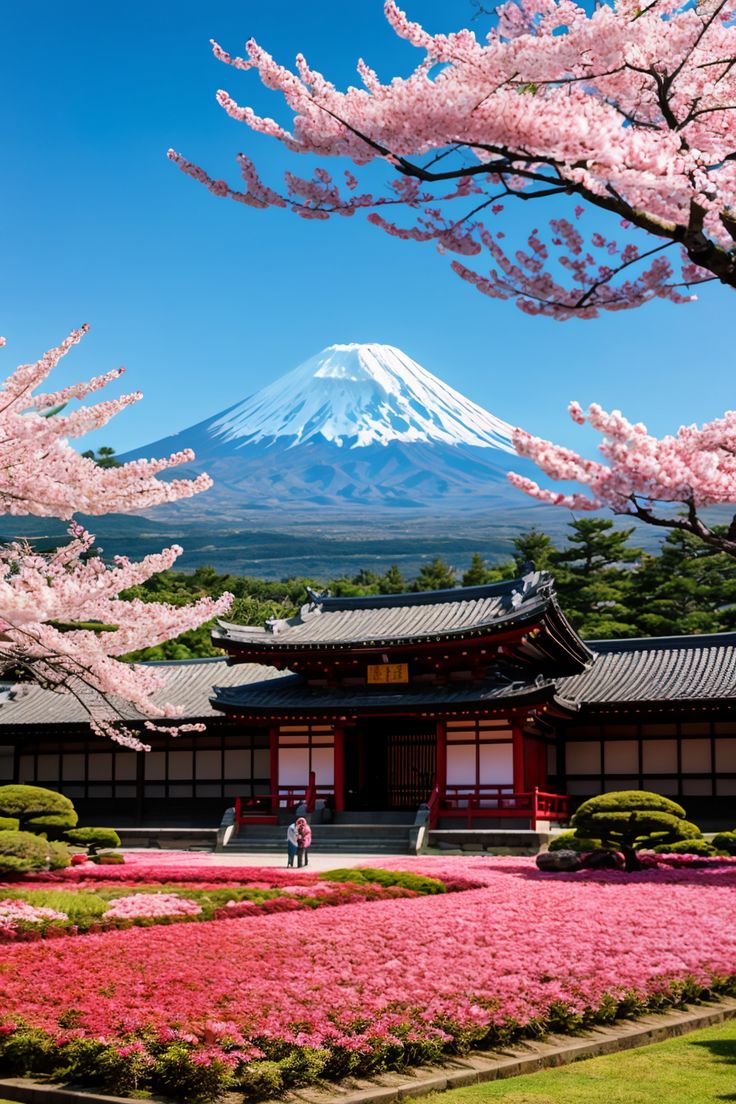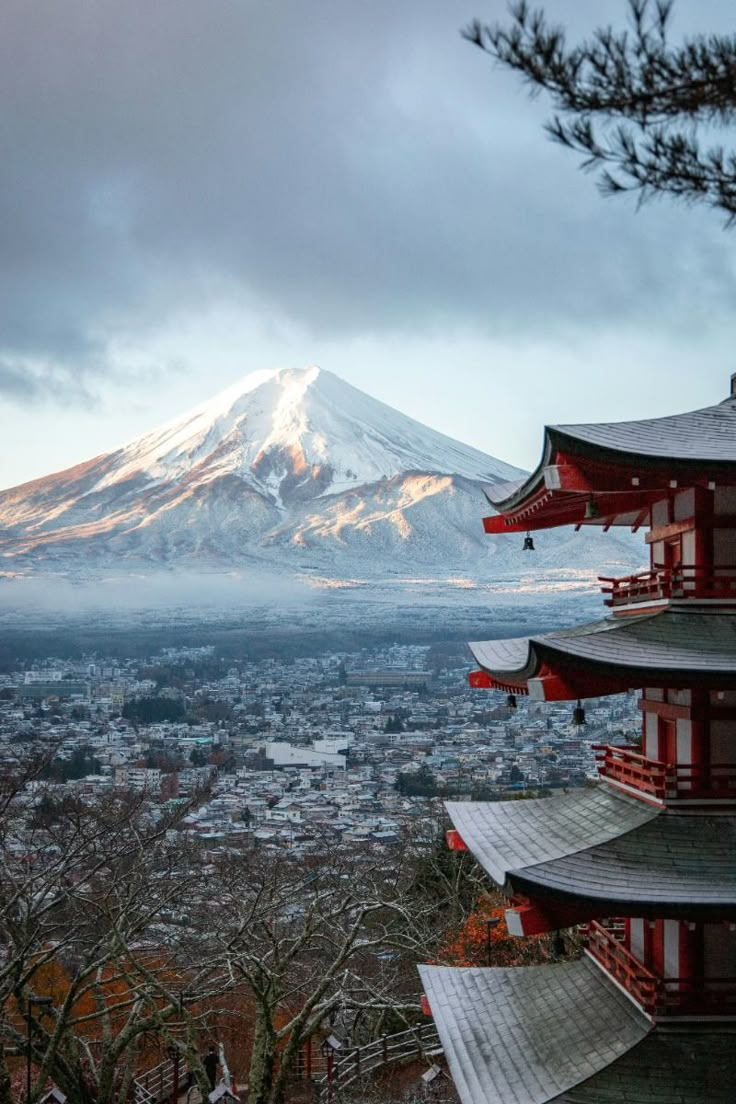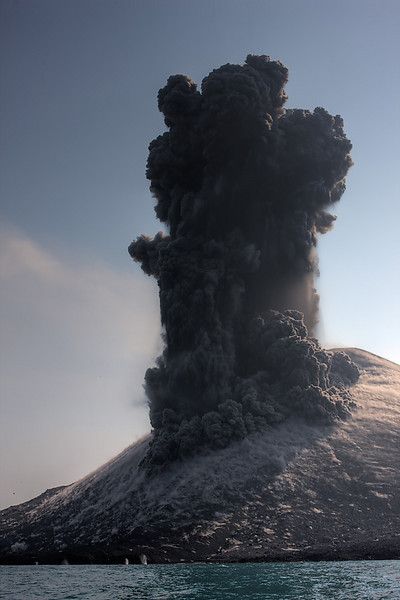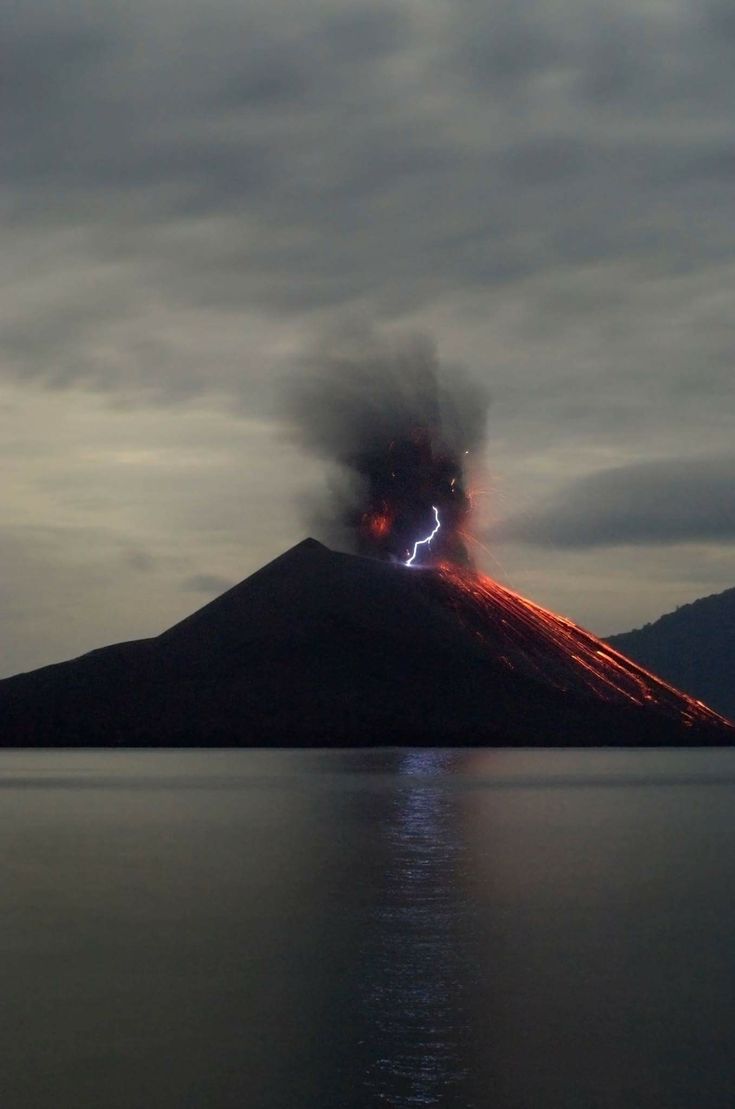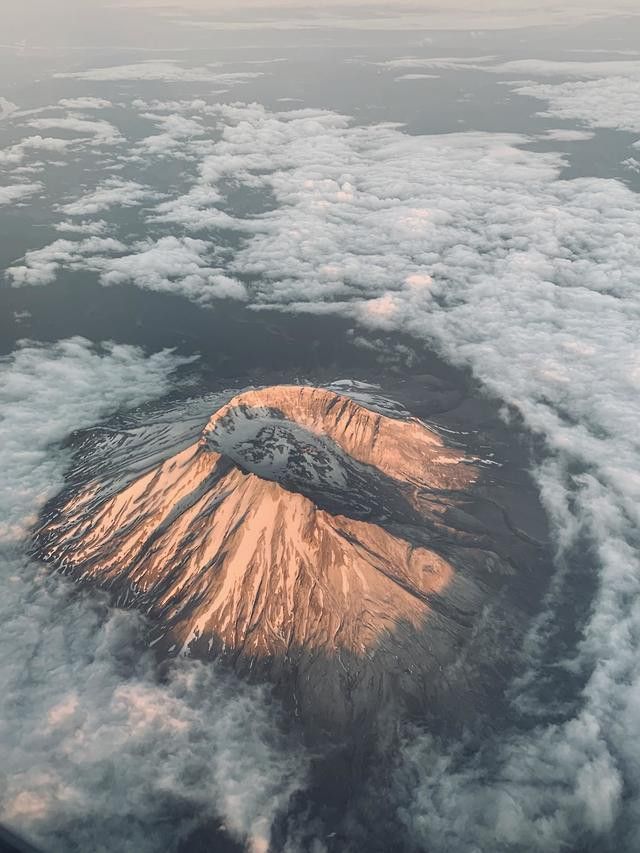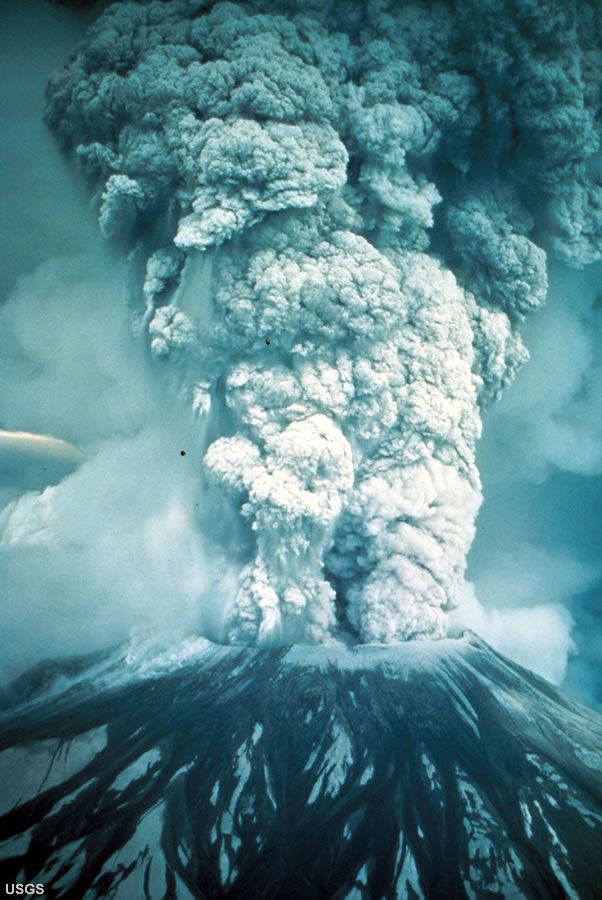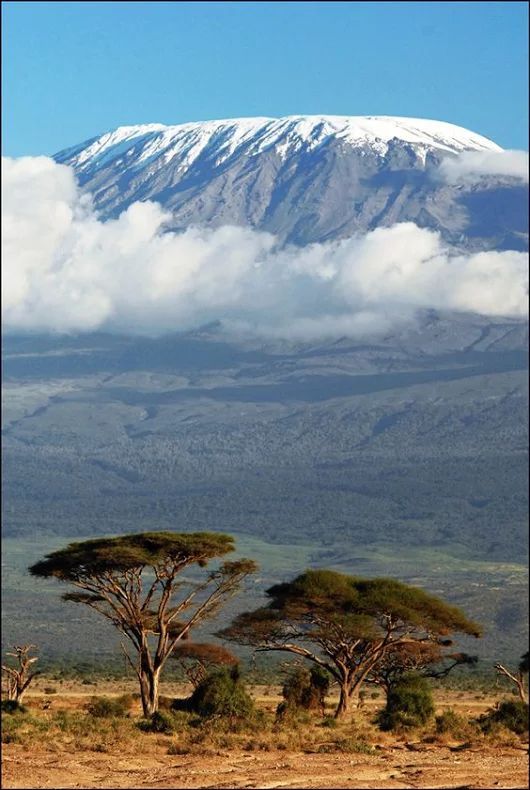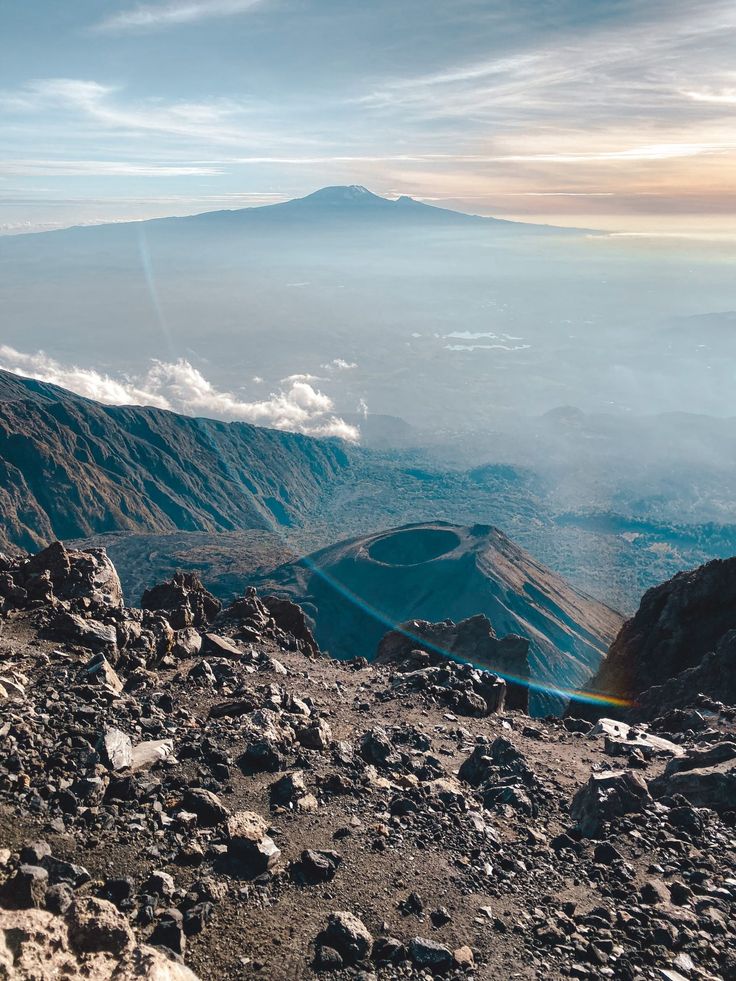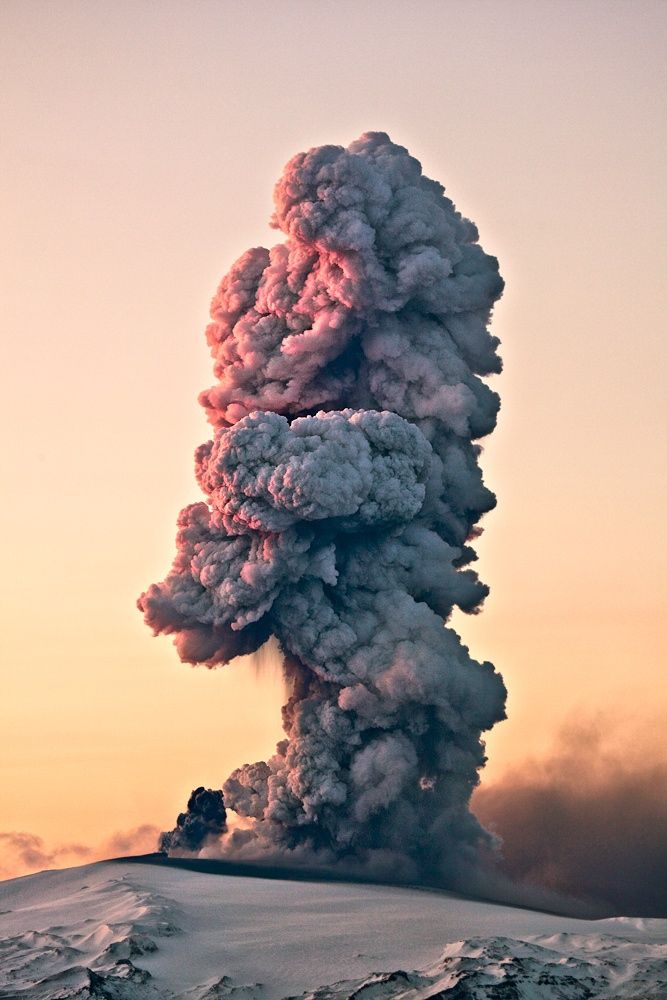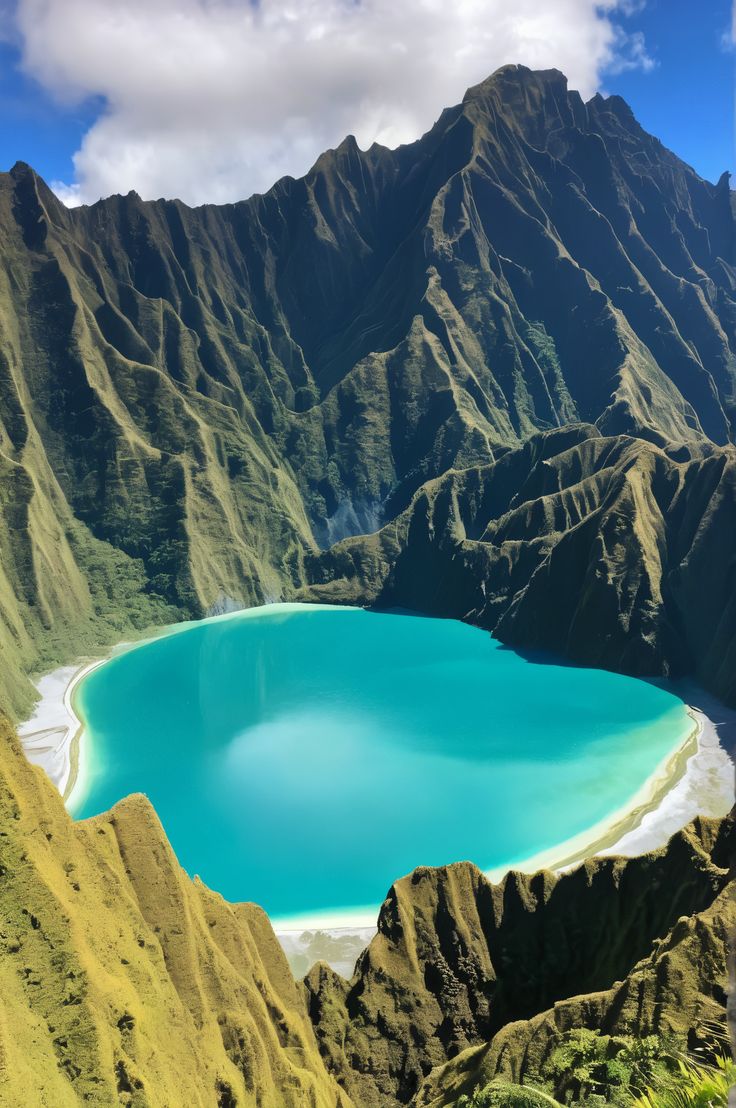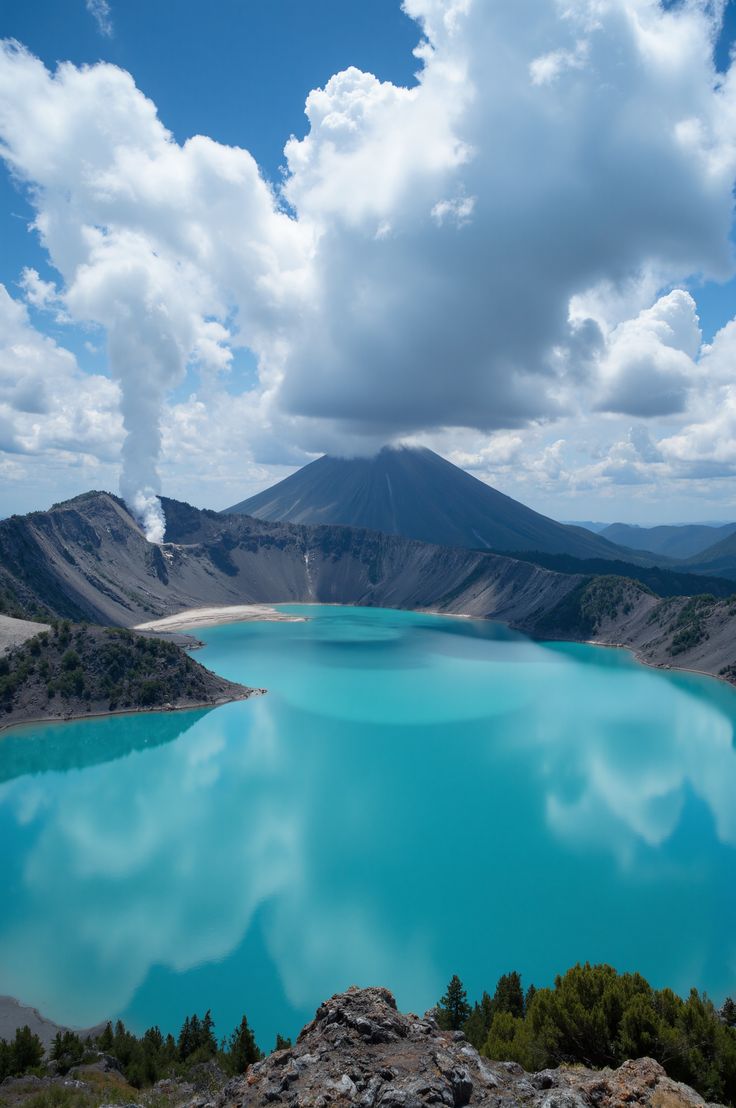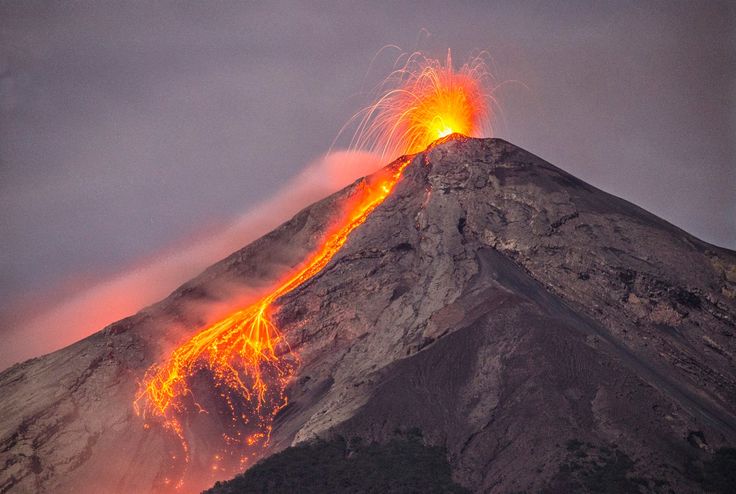1. Mauna Loa (Top Volcanoes of the World) (Hawaiʻi, USA)
- Shield Volcano in type(Top Volcanoes of the World) Elevation: about 33,500 feet (10,210 meters) above sea level, or 13,681 feet (4,170 meters) above sea levelLocation: Hawaii’s Big IslandNovember 27–December 13, 2022 was the last eruption.One of the most active volcanoes, with about 33 eruptions since 1843Notable attributes:
The biggest volcano in the world by volume
Lava flows may swiftly cover large distances.
Volcanoes National Park in Hawaii
Threat Level: High; under careful observation because of possible danger to neighboring communities (e.g., Hilo, Kailua-Kona)
- Top Volcanoes of the World
🌋 2. Mount Vesuvius (Italy)
- Stratovolcano in typeElevation: 1,281 meters (4,203 feet)Location: Italy, close to Naples1944 was the last eruption.Volcanic Activity: Known to be dormant yet active, many eruptions in the pastNotable attributes:
renowned for the explosion in 79 AD that buried Herculaneum and Pompeii
One of the most researched volcanoes in the world
Threat Level: Very high; it is one of the most hazardous volcanoes on Earth, with almost 3 million people living nearby.
🌋 3. Mount Etna (Sicily, Italy)(Top Volcanoes of the World)
- Stratovolcano in typeElevation: around 11,100 feet (3,350 meters)Location: Sicily’s east coastLast Eruption: Constantly active, with 2023 includedVolcanic Activity: With over 3,000 years of recorded eruptions, this volcano is the most active in Europe.Notable attributes:
UNESCO World Heritage Site
Constant summit activity; hiking and cable car access for tourists
Threat Level: Moderate to high; ash and lava might threaten neighboring cities (Catania).
🌋 4. Mount Fuji (Japan)(Top Volcanoes of the World)
- Stratovolcano in typeElevation: 3,776 meters (12,389 feet)Location: close to Tokyo on Honshu IslandThe last eruption was the Hōei eruption in 1707.Although dormant, volcanic activity is thought to be potentially active.Notable attributes:
Japan’s cultural and spiritual emblem
Every year, hundreds of climbers visit this pilgrimage location.
Threat Level: Moderate; an eruption near Tokyo would have significant logistical and economic repercussions.
🌋 5. Krakatoa (Krakatau) (Indonesia)
-
Type:
Caldera; recent actions from “Anak Krakatau” (Krakatoa’s child)
Elevation: about 1,000 feet (300 meters)
Location: Sunda Strait, which separates Sumatra and Java
2018 was the last major eruption that resulted in a tsunami.
Volcanic Activity: Regular since Anak Krakatau first appeared in 1927
Notable attributes:
About 36,000 people died in the 1883 eruption, which also had an impact on the climate worldwide.
Risk of tsunamis as a result of underwater collapses and eruptions
Threat Level: High; because of the surrounding population and the potential for rapid explosion, it is active and hazardous.
🌋 6. Mount St. Helens (Washington, USA)
- Stratovolcano in typeElevation: 2,550 meters (8,366 feet)Where: Washington State, USALast eruption: dome-building eruption, 2004–2008Volcanic Activity: Continuous fumarole and low-level seismic activityNotable attributes:
The 1980 eruption killed 57 people and ruined the peak.
most researched volcano in the United States.
Threat Level: Moderate; because of previous catastrophic eruptions, the USGS is closely monitoring
🌋 7. Mount Kilimanjaro (Tanzania)
- Type: dormant stratovolcanoHeight: 19,341 feet (5,895 meters)Location: close to the Kenyan border in northern TanzaniaThe last eruption was more than 360,000 years ago, and fumaroles may still be seen in the Kibo cone.Volcanic Activity: Not active; no eruptions have occurred recently.Notable attributes:
The highest summit in Africa
Snow and glaciers are present, however they are quickly melting.
Threat Level: little; well-liked hiking location, now little probability of volcanic eruptions
🌋 8. Eyjafjallajökull (Iceland)
- Type: Glacier-covered stratovolcanoElevation: 1,651 meters (5,417 feet)Where: Iceland’s southern region2010 was the last eruption.Volcanic Activity: Rare but able to produce violent eruptionsNotable attributes:
The 2010 eruption severely disrupted air traffic throughout Europe.
situated beneath a glacier, which results in lava and ice interacting explosively
Moderate threat level that has a greater impact on air travel than the local population
🌋 9. Mount Pinatubo (Philippines)
- Stratovolcano in typeElevation: 1,460 meters (4,800 feet)Location: Philippines’ Luzon1991 was the last major eruption.Volcanic Activity: Not active since 1993, yet there is still a chance of activity in the future.Notable attributes:
One of the biggest eruptions of the 20th century occurred in 1991.
caused the stratosphere’s sulfur dioxide to cause a dip in global temperatures
Threat Level: Moderate; although neighboring towns are now more prepared, there is still a long-term risk.
🌋 10. Mount Nyiragongo (Democratic Republic of the Congo)(Top Volcanoes of the World)
- Stratovolcano in type11,385 feet (3,470 meters) in elevationLocation: close to Goma in the Virunga MountainsEruption last time: May 2021Volcanic Activity: Known for lava lake activity, this activity is frequent and dangerous.Notable attributes:
is one of the most active lava lakes in the world.
Lava flows are extremely dangerous since they may go up to 60 km/h.
Threat Level: Extremely high; Goma (which has around two million adjacent citizens) is at serious peril.
